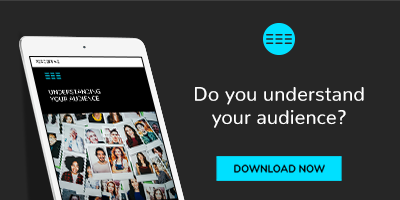Segmentation is something that businesses should do periodically to understand what customer needs have changed—and how to better meet those needs. And the most successful market segmentation exercises follow a plan.
From setting out your objectives to executing your segmentation research, this checklist points out the four critical stages of implementing your market segmentation plan. Ensure you're on the right track by following the below.
Learn more: Understanding your audience: a step-by-step guide to to help you identify, connect and influence your customers

1. Objective setting
This stage involves:
- Engaging stakeholders who will use the segmentation research in your organisation.
- Setting segmentation objectives and goals.
- Identifing segmentation variables.
In this stage, you'll identify the type of segmentation you will undertake. There are many kinds of segmentation—from basic demographic segmentation through to needs- and behavioural-based. Your business goals and how you plan to use the segmentation within your business will dictate the type of segmentation you use, so it is important to talk to the different areas within your business to understand what they need from this research.
We cannot stress enough how crucial stakeholder engagement is at this stage. It not only increases buy-in for the project in this early stage, but it will also aid the uptake of the segmentation and the strategies you develop from it when you start to disseminate it across the business later.
Read more: Everything you need to know about the 6 types of market segmentation
2. Identify customer segments
This stage involves:
- Research design.
- Data collection.
- Analysing data and identify segments.
- Validating all results.
This is the research fieldwork phase. This may involve qualitative interviews or focus groups with consumers to help establish their needs, behaviours and attitudes. In this stage, it's important not to assume you know what these needs, behaviours and attitudes are. Instead, let the consumers speak for themselves as you may find that what you think you know versus what consumers actually say are quite different.
Following this, you'll want to validate your qualitative findings with a larger study. This is usually done via an online survey. As a general rule, it's often useful to incorporate additional data sources into the study at this point, such as sales or transactional data, particularly if you're segmenting your customers or a portion of your customers. If you do this, you'll likely want to engage with a data scientist to help you model and extract insights from the data to use in the study.
Once the fieldwork and analysis is done, you will have a set of consumer segments to work with.
Read more: Learn how data modelling and segmentation helped Burger King uncover their most valuable customers
3. Develop segmentation strategy
This stage involves:
- Selecting target segment(s).
- Identifying segmentation implications and recommendations.
Here is where you put your segments to work. Your analysis has likely identified who your most valuable segments are, or perhaps the segment(s) with the most opportunity. Certain segments may more receptive to your product or service offerings while other may be receptive but remain unserviced.
From here, you'll identify which segment(s) you're organisation will focus on acquiring and use the insights from the research to form a strategy to tailor your marketing, promotion, and products to your chosen segment.
Read more: The power trio: brand tracking, segmentation and data science
4. Execute launch plan
This stage involves:
- Identifying key stakeholders.
- Developing communications and operational launch plan.
- Executing and monitoring.
Segmentation research is most powerful when it is disseminated and used across all levels of an organisation. To this end, make sure this information is readily available to all your teams to help them incorporate the segmentation into their everyday work.
To help this, we recommend producing tailored reports our outtake sheets for each department or team that covers the key insights from the segmentation and how they can be applied to that specific area of the business.
Engaging and communicating with key stakeholders is essential at this stage. Not only does it aid buy-in, but it increases the likelihood that the segmentation will be used and followed.
Read more: Discover how a segmentation study gave MetService a holistic understanding of the weather information market
Summary
There is a clear process to segmentation. Within each stage, there are sub-steps that need to be thought about before moving on to the next stage.
Most marketers struggle the most during the first two stages. Even though you might rush your research and data collection, it’s the most important stage of market segmentation.
Too hard basket?
No time or resource or need some strategic direction? It can be comforting to know you're on the right track when devising your business strategy. Why not chat to one of our friendly research experts regarding your next steps. Get in touch here.
Want to use segmentation and persona development to improve your marketing? Download our free guide, Understanding your audience, and get best practice strategies on how segmentation achieves your business objectives.
